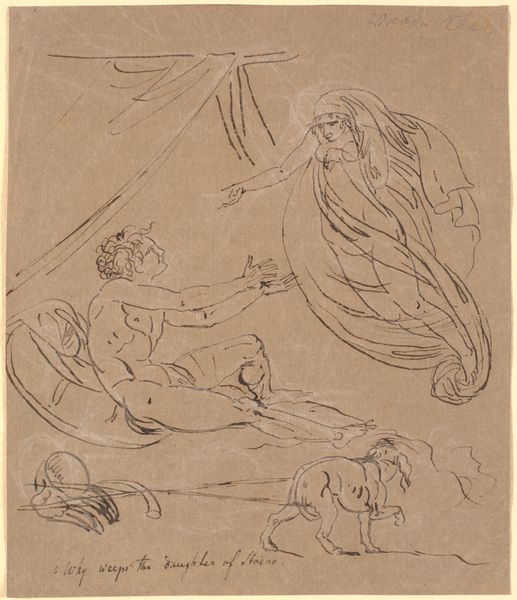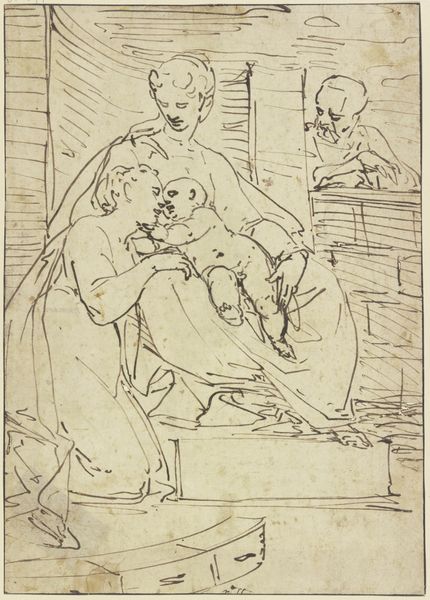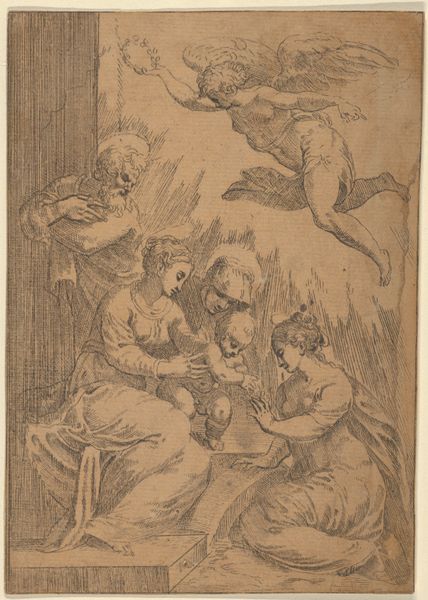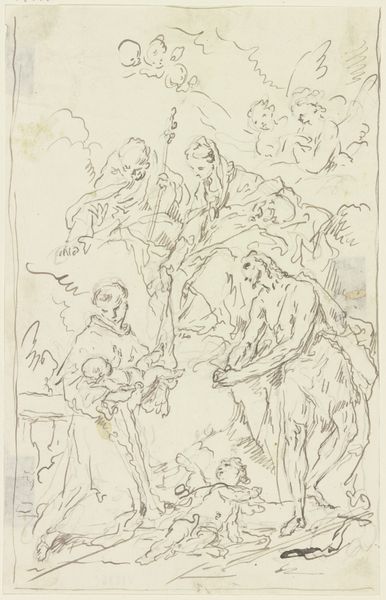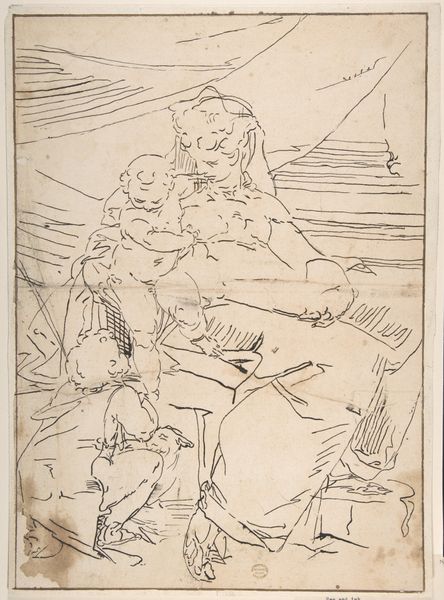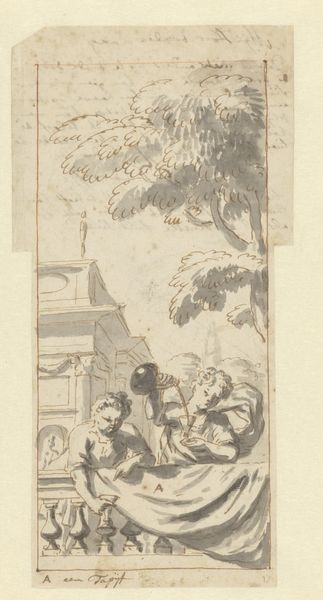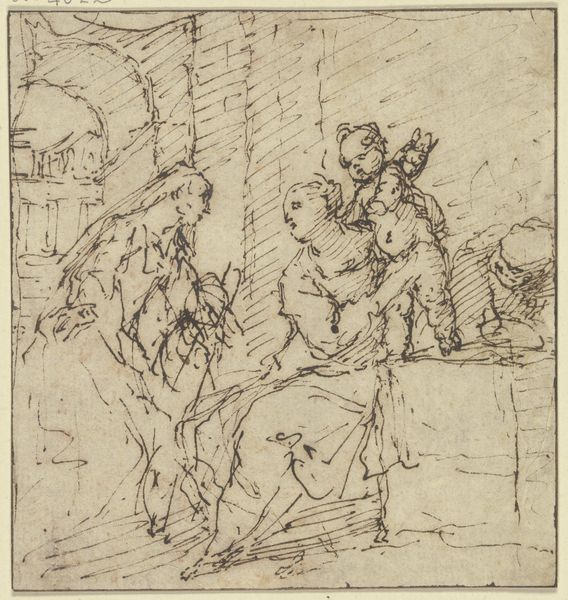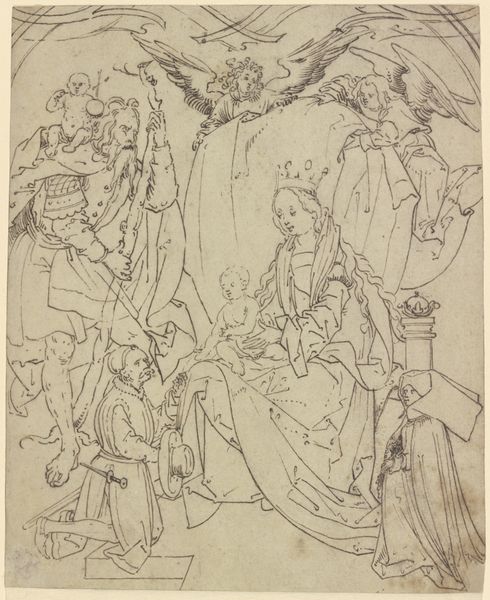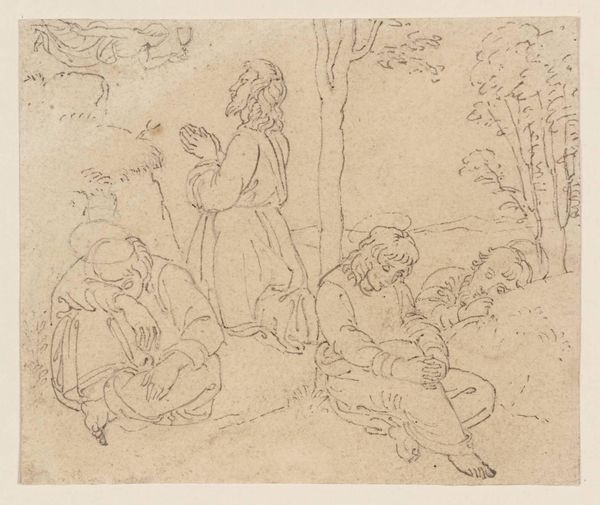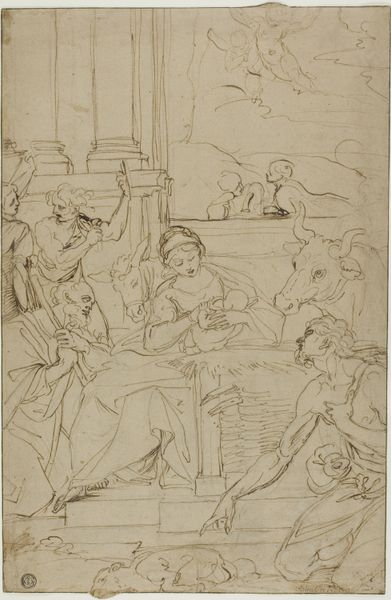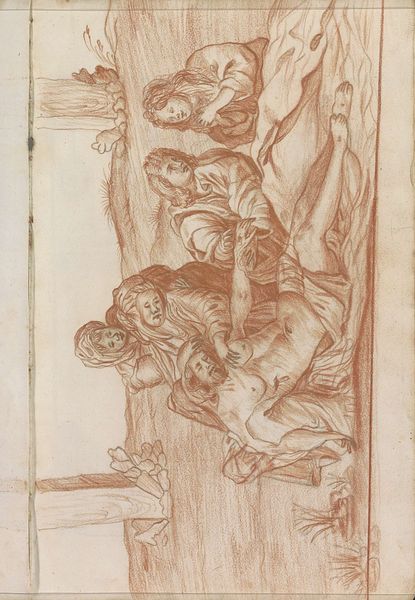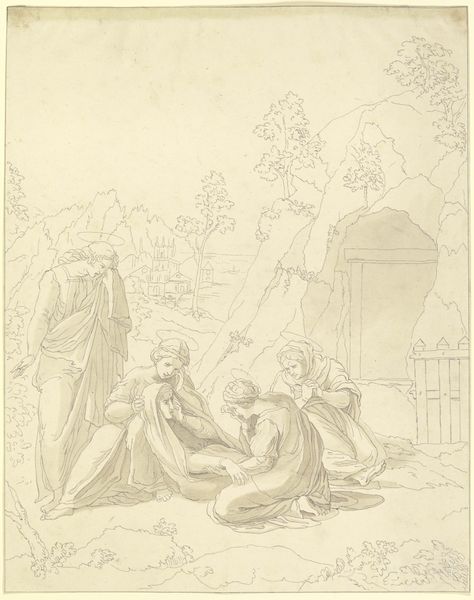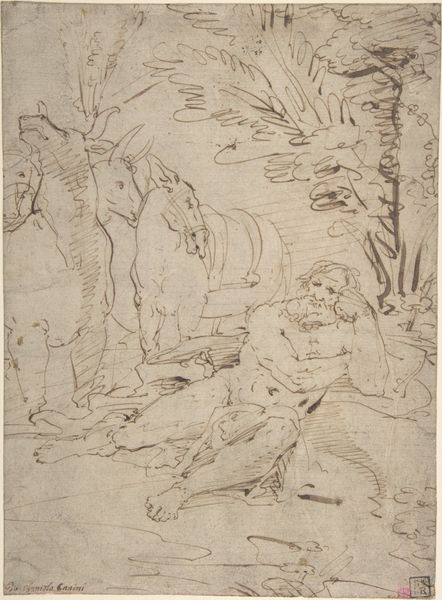
drawing, ink, pen
#
drawing
#
narrative-art
#
baroque
#
pen sketch
#
landscape
#
figuration
#
ink
#
pen
#
history-painting
Dimensions: 415 mm (height) x 279 mm (width) (bladmaal)
Curator: Here we have Hendrik Krock’s pen and ink drawing, "Moses findes i Nilen," or "Moses Found in the Nile," created sometime between 1671 and 1738. It's currently held at the Statens Museum for Kunst. Editor: The linework gives it an ethereal quality. Almost dreamlike. The figures are present but feel somewhat translucent, like a memory rather than a solid depiction. Curator: Krock was known for his Baroque style and his ability to capture dramatic moments. This drawing illustrates a key narrative from the Book of Exodus. Editor: Yes, a scene ripe with meaning! The figures clustered around the infant Moses are rendered with a soft delicacy. It's a stark juxtaposition to the socio-political turmoil and fear that motivated Moses’ mother to place him in the Nile. It brings forward questions about maternal choices amid violence, something so sadly evergreen. Curator: It is striking how Krock chose to portray this intimate discovery within a seemingly tranquil landscape, rather than emphasizing the surrounding dangers or political environment of the time. This decision reinforces the individual humanity within this story. The figures around baby Moses become all that matters. Editor: Absolutely. I read this image as subtly rebellious against the patriarchal order which placed such children at risk. The women’s gestures of discovery and protection around Moses become radical acts of defiance against oppressive structures. The composition centers feminine empathy. Curator: These quick, preliminary sketches served as important studies for larger compositions, reflecting the artistic process prevalent in the Baroque era. Editor: What resonates with me is how Krock uses such simple strokes to portray a turning point. We look at it now knowing how the infant Moses went on to transform societies. The beauty in finding possibility, in an act of protection. Curator: A story about fear, survival, and divine intervention made intimate through simple artistic tools and translated to audiences for centuries after. Editor: And perhaps the power of art is revealing the nuances within grand narratives. Highlighting the acts of care that shape destinies.
Comments
No comments
Be the first to comment and join the conversation on the ultimate creative platform.
